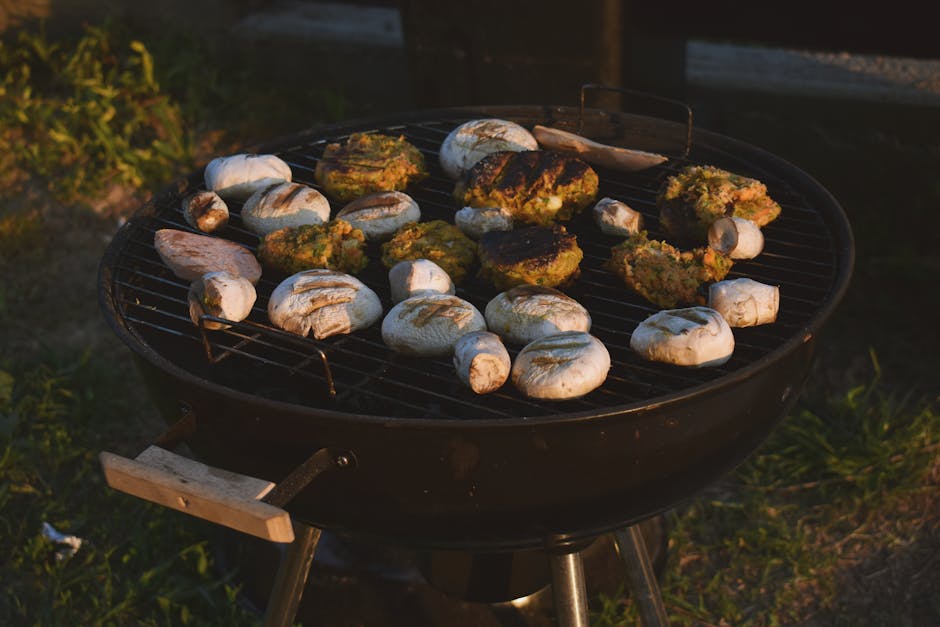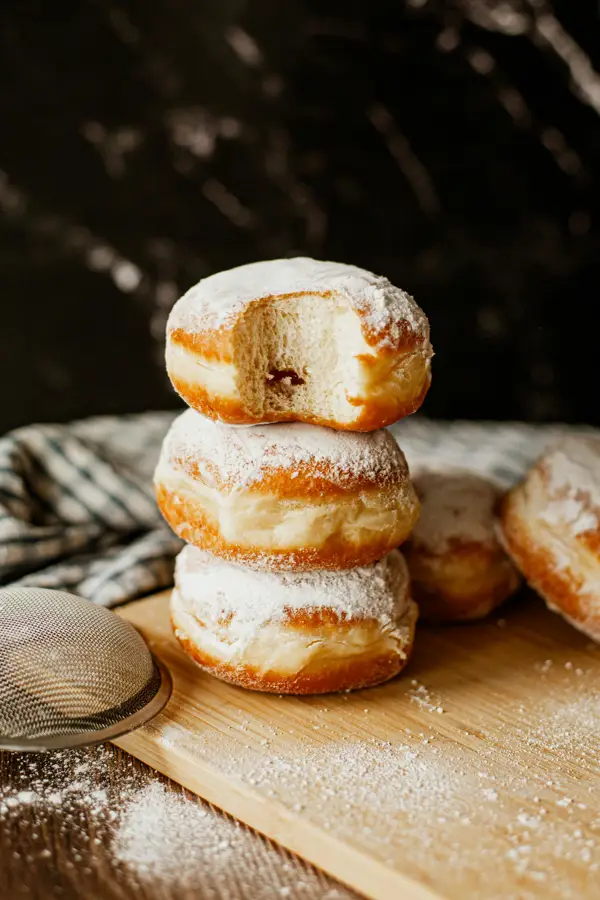Grilled chicken, a seemingly simple dish, boasts a surprisingly rich and diverse history, its journey reflecting the evolution of culinary practices across the globe. While pinpointing its exact origin is difficult, evidence suggests that the practice of grilling meat dates back millennia, with archaeological findings indicating the use of fire for cooking in prehistoric times. Early forms of grilling likely involved placing meat directly over embers, a method still employed in many cultures today. The integration of marinades and sauces, like the ubiquitous BBQ sauce, came later, adding layers of flavor and cultural specificity.
The development of BBQ sauce itself is a fascinating story, intricately woven into the history of American cuisine. While its precise origins are debated, many trace its roots to the Carolinas in the 18th and 19th centuries, where enslaved Africans combined indigenous ingredients with European techniques. This fusion resulted in a unique culinary tradition that spread across the country, evolving into the countless regional variations we see today. Interestingly, the popularity of BBQ sauce has skyrocketed in recent decades, with market research indicating a projected value exceeding billions of dollars in the coming years, showcasing its enduring appeal.
Beyond its economic significance, grilled chicken with BBQ sauce holds considerable cultural weight. It’s a staple at backyard barbecues, family gatherings, and sporting events across the United States, symbolizing community, relaxation, and shared experiences. The act of grilling itself often represents a communal activity, fostering interaction and connection around the shared preparation and consumption of food. Furthermore, the dish’s adaptability allows for regional and personal variations, reflecting individual tastes and cultural influences. From the smoky sweetness of a Carolina-style sauce to the tangy zest of a Kansas City blend, the possibilities are endless, making it a truly versatile and beloved culinary icon.
This recipe will guide you through the process of creating delicious grilled chicken with BBQ sauce, emphasizing simplicity and flavor. We’ll explore techniques to ensure perfectly cooked, juicy chicken every time, along with tips for selecting the best BBQ sauce to complement your taste preferences. Get ready to experience the joy of grilling and the satisfaction of creating a truly memorable meal.
Ingredients and Measurements
This recipe yields approximately 4 servings of delicious grilled BBQ chicken. The quantities can be easily adjusted to suit your needs; just remember to maintain the ratios for optimal flavor.
Chicken: We’ll be using 1.5 lbs (approximately 680g) of boneless, skinless chicken breasts. Choosing high-quality chicken is crucial for the best taste and texture. Look for breasts that are plump, firm, and free of discoloration. You can also use chicken thighs, but adjust grilling time accordingly as they tend to be more fatty and take longer to cook through. If using bone-in chicken, increase the cooking time significantly and ensure the internal temperature reaches 165°F (74°C).
Marinade (Optional, but highly recommended): A marinade helps to tenderize the chicken and infuse it with flavor. For this recipe, we’ll use ½ cup (120ml) of your favorite BBQ sauce (see note below), ¼ cup (60ml) of olive oil, 2 tablespoons (30ml) of apple cider vinegar, 1 tablespoon (15g) of brown sugar, 1 teaspoon (5ml) of smoked paprika, ½ teaspoon (2.5g) of garlic powder, ¼ teaspoon (1.25g) of onion powder, and ¼ teaspoon (1.25g) of black pepper. Adjust the amount of marinade based on the quantity of chicken; ensure all pieces are well coated.
BBQ Sauce: You’ll need approximately 1 cup (240ml) of your favorite BBQ sauce for basting and serving. Experiment with different types of BBQ sauces to find your perfect flavor profile. Consider using a thicker sauce for better adhesion to the chicken during grilling. Store-bought or homemade sauces work equally well.
Other Ingredients: For optimal grilling, you’ll need approximately 1 tablespoon (15ml) of olive oil for greasing the grill grates. This helps prevent sticking and ensures even browning. Don’t skip this step! Additionally, you can garnish your finished chicken with chopped fresh parsley or chives for an extra pop of color and freshness.
Note: If you prefer a spicier marinade or BBQ sauce, feel free to add a pinch of cayenne pepper or your preferred hot sauce. Always taste and adjust seasonings to your liking.
Equipment and Utensils
Grilling delicious chicken requires the right tools. For this recipe, you’ll need a reliable grill, preferably one that allows for consistent temperature control, such as a gas grill or a charcoal grill with a good ventilation system. A gas grill is generally recommended for beginners as it offers more precise temperature regulation.
Beyond the grill itself, you’ll need a sturdy grill grate. Ensure your grate is clean before starting; a wire brush is excellent for removing any debris or remnants from previous grilling sessions. A dirty grate can lead to sticking and uneven cooking. Consider using a grill mat if you are concerned about smaller pieces of chicken falling through the grates.
For preparing the chicken, you’ll need a selection of utensils. A large bowl (approximately 3-quart capacity) will be necessary for marinating the chicken. Use tongs, not forks, to handle the chicken, as piercing the meat allows juices to escape, resulting in drier chicken. A pair of good quality kitchen tongs (at least 12 inches long for safe grilling) is essential. You’ll also need a meat thermometer; a digital instant-read thermometer is ideal for ensuring the chicken reaches a safe internal temperature of 165°F (74°C).
Measuring tools are crucial for accuracy. You’ll need measuring cups (1 cup and 1/4 cup) and measuring spoons (1 tablespoon and 1 teaspoon) for the marinade and BBQ sauce. A basting brush, preferably one with silicone bristles for heat resistance, will help you evenly apply the BBQ sauce during the grilling process. Finally, don’t forget a sturdy spatula, approximately 14 inches long, for safely turning and removing the chicken from the grill. A silicone spatula is recommended as it won’t scratch your grill grates.
Optional but highly recommended equipment includes a grill cover to help maintain consistent temperature and protect your grill from the elements, and aluminum foil for easy cleanup. Remember to always exercise caution when handling hot equipment and surfaces. Use oven mitts or grill gloves to protect your hands. Proper equipment and preparation ensure a successful and enjoyable grilling experience.
Preparation of Chicken (Marinating/Seasoning)
The success of your grilled chicken hinges significantly on proper preparation. Marinating and seasoning the chicken not only enhances its flavor but also ensures it stays juicy and tender during grilling. For this recipe, we’ll use a simple yet flavorful marinade that complements the BBQ sauce beautifully.
Choose your chicken wisely: Start with about 1.5 lbs (680g) of boneless, skinless chicken breasts or thighs. Chicken breasts cook faster, but thighs tend to be more forgiving and less prone to drying out. Ensure the chicken is completely thawed before marinating.
Prepare the marinade: In a medium-sized bowl, whisk together the following ingredients: 1/4 cup (60ml) olive oil, 2 tablespoons (30ml) lemon juice, 1 tablespoon (15g) brown sugar, 1 tablespoon (15ml) soy sauce (or tamari for gluten-free), 1 teaspoon garlic powder, 1 teaspoon onion powder, 1/2 teaspoon paprika, 1/4 teaspoon black pepper, and 1/4 teaspoon cayenne pepper (optional, for a little heat). Adjust the spices to your preference; feel free to add more or less of any ingredient based on your taste.
Marinate the chicken: Place the chicken in a resealable plastic bag or a shallow dish. Pour the marinade over the chicken, ensuring all pieces are coated evenly. Seal the bag tightly or cover the dish. Refrigerate for at least 30 minutes, but ideally for 2-4 hours, or even overnight for maximum flavor penetration. Longer marinating times result in more tender and flavorful chicken, but ensure it doesn’t marinate for more than 24 hours to avoid over-tenderizing.
Important Note: Always marinate your chicken in the refrigerator. Never allow raw chicken to marinate at room temperature to prevent bacterial growth. After marinating, discard any leftover marinade. Do not reuse it.
Alternative Dry Brine: If you prefer not to use a wet marinade, you can opt for a dry brine. Generously season the chicken with salt, pepper, garlic powder, onion powder, and paprika. Let it sit in the refrigerator uncovered for at least 30 minutes to allow the salt to draw out moisture and then reabsorb it, resulting in a juicier chicken. This method is particularly effective for chicken breasts.
Once marinated, your chicken is ready for grilling! Remember to preheat your grill to medium-high heat before placing the chicken on the grates.
Grilling Techniques (Heat Control, Cooking Time)
Mastering heat control and cooking time is crucial for perfectly grilled chicken. Overcooked chicken is dry and tough, while undercooked chicken is unsafe. We’ll cover both direct and indirect grilling methods to ensure juicy, flavorful results.
Direct grilling involves placing the chicken directly over the heat source. This method is ideal for searing and creating those beautiful grill marks. For chicken breasts, about 1-inch thick, preheat your grill to medium-high heat (approximately 375-400°F or 190-205°C). You can check the temperature using a grill thermometer. Place the chicken on the preheated grill grates, ensuring they are clean and oiled to prevent sticking.
Indirect grilling uses the cooler areas of the grill to cook the chicken more gently, preventing burning while ensuring even cooking. This is particularly useful for thicker cuts of chicken or when you want to cook a larger batch. To achieve indirect heat, preheat your grill as above, then move the chicken to the side of the grill away from the direct flames. You may need to adjust the vents on your grill to maintain a consistent temperature.
Cooking time is highly dependent on the thickness of your chicken breasts. For 1-inch thick chicken breasts, plan for approximately 6-8 minutes per side using direct heat for searing, followed by a move to indirect heat to finish cooking. Use a meat thermometer to ensure the internal temperature reaches a safe 165°F (74°C). Never rely solely on visual cues; a meat thermometer is your best friend for food safety.
For thicker chicken breasts (1.5 inches or more), increase the cooking time accordingly. Start with direct heat for 8-10 minutes per side, then move to indirect heat until the internal temperature reaches 165°F (74°C). This might take an additional 10-15 minutes depending on the thickness and your grill’s heat. Remember to rotate the chicken every 5-7 minutes while grilling to ensure even cooking and beautiful grill marks.
Professional Tip: Brining your chicken before grilling helps retain moisture and adds flavor. A simple brine can be made by dissolving 1/4 cup of salt and 1/4 cup of sugar in 4 cups of water. Soak your chicken in the brine for at least 30 minutes, or up to 4 hours in the refrigerator.
Important Note: Always allow the chicken to rest for 5-10 minutes after grilling before slicing and serving. This allows the juices to redistribute, resulting in a more tender and flavorful final product.
BBQ Sauce Preparation (if homemade)
Making your own BBQ sauce allows for complete control over the flavor profile and ingredients, resulting in a truly customized grilling experience. This recipe creates a classic tangy and smoky sauce, but feel free to adjust to your preference. Remember to adjust cooking time based on your stovetop’s heat.
Ingredients:
- 1 large onion, finely chopped (approximately 1 cup)
- 2 cloves garlic, minced
- 1 cup ketchup
- 1/2 cup apple cider vinegar
- 1/4 cup brown sugar, packed
- 2 tablespoons Worcestershire sauce
- 1 tablespoon smoked paprika
- 1 teaspoon ground cumin
- 1 teaspoon onion powder
- 1/2 teaspoon garlic powder
- 1/4 teaspoon cayenne pepper (optional, for heat)
- 1/4 cup water
Instructions:
1. In a medium saucepan over medium heat, sauté the chopped onion until softened and translucent, about 5-7 minutes. Add the minced garlic and cook for another minute until fragrant. Don’t burn the garlic; low to medium heat is crucial here.
2. Stir in the ketchup, apple cider vinegar, brown sugar, Worcestershire sauce, smoked paprika, cumin, onion powder, garlic powder, and cayenne pepper (if using). Ensure all ingredients are well combined.
3. Bring the mixture to a simmer, then reduce the heat to low. Let it simmer gently, uncovered, for 20-25 minutes, stirring occasionally. The sauce will thicken as it simmers. If the sauce becomes too thick, add a tablespoon or two of water at a time until you reach your desired consistency. If it’s too thin, continue simmering uncovered for a longer duration.
4. Once the sauce has reached your desired consistency and flavor, remove it from the heat and let it cool slightly before using. Taste and adjust seasonings as needed. You might want to add more brown sugar for sweetness, vinegar for tang, or cayenne for heat.
5. The sauce can be stored in an airtight container in the refrigerator for up to a week. For longer storage, consider freezing the sauce in ice cube trays for easy portioning.
Professional Recommendation: For a deeper, richer flavor, consider using a high-quality ketchup and Worcestershire sauce. Experiment with different types of vinegar (like white wine vinegar or balsamic vinegar) to customize the taste. Adding a tablespoon of molasses can also add a delightful depth of flavor.
Applying BBQ Sauce
Applying BBQ sauce is the crucial final step that elevates your grilled chicken from good to exceptional. The timing and technique are key to achieving a delicious, sticky, and caramelized finish without burning the chicken or creating a soggy mess. We recommend using approximately 1/2 cup of your favorite BBQ sauce for 4-6 chicken breasts (adjust accordingly for larger or smaller batches).
Timing is everything. Avoid applying the sauce too early in the grilling process. Adding it too soon will cause the sugar in the sauce to burn before the chicken is cooked through, resulting in a bitter taste and charred exterior. The ideal time to apply the sauce is during the last 10-15 minutes of grilling. This allows the sauce to caramelize beautifully without burning.
Method 1: The Basting Method. This method involves repeatedly brushing the sauce onto the chicken throughout the final 10-15 minutes. Using a clean basting brush, apply a thin, even coat of sauce to all sides of the chicken. Repeat every 2-3 minutes, ensuring each layer has a chance to slightly caramelize before adding more. This method produces a deep, rich flavor and a beautiful glossy finish. Be careful not to apply too much sauce at once, as this can lead to flare-ups.
Method 2: The Finishing Glaze Method. For a simpler approach, reserve about 1/4 cup of your BBQ sauce for the final 2-3 minutes of grilling. Grill the chicken as usual until almost cooked through. Once the chicken reaches an internal temperature of 165°F (74°C), generously brush the remaining sauce onto the chicken, allowing it to caramelize and create a sticky glaze. This method is great for achieving a concentrated burst of flavor.
Professional Tip: Consider thinning your BBQ sauce slightly with a tablespoon or two of water or chicken broth if it’s particularly thick. This will help it spread more easily and prevent it from burning. Always use a clean basting brush to prevent cross-contamination of flavors.
Important Note: Always ensure your chicken is cooked thoroughly to an internal temperature of 165°F (74°C) before removing it from the grill. Use a meat thermometer to check for doneness. Overcooked chicken will be dry, while undercooked chicken is unsafe to eat.
Experiment with different BBQ sauce application methods to find your preferred technique. Whether you opt for the basting method or the finishing glaze method, remember that careful timing and even application are key to achieving perfectly grilled chicken with a delicious BBQ sauce coating.
Recommendations
For the best results, ensure your chicken breasts are at room temperature before grilling. This allows for even cooking and prevents the chicken from becoming dry. Marinate the chicken for at least 30 minutes, or up to overnight, for maximum flavor absorption. Experiment with different BBQ sauces to find your favorite; a smoky, tangy sauce pairs particularly well with grilled chicken.
Serving Suggestions: This grilled chicken is incredibly versatile! Serve it on its own with a side salad, or use it as a base for tacos, salads, sandwiches, or wraps. It’s also delicious sliced over rice or quinoa. Consider adding grilled vegetables like bell peppers, onions, or zucchini to complement the chicken.
Complementary Dishes: A classic pairing is coleslaw, offering a refreshing contrast to the rich BBQ flavor. Corn on the cob, potato salad, or baked beans are other excellent side dishes. For a lighter option, a simple green salad with a vinaigrette dressing works perfectly.
Storage: Leftover grilled chicken should be stored in an airtight container in the refrigerator for up to 3-4 days. Allow the chicken to cool completely before storing to prevent bacterial growth. You can also freeze the chicken for longer storage; it will keep for up to 3 months in the freezer.
Nutritional Information (per serving, approximate): The nutritional information will vary depending on the size of the chicken breast, the type of BBQ sauce used, and any added ingredients. However, a typical serving (approximately 4 oz) of grilled chicken breast with BBQ sauce contains roughly 200-250 calories, 30-40g protein, 5-10g fat, and 0-5g carbohydrates. This is an estimate; for precise nutritional information, use a nutrition calculator and input your specific ingredients and quantities.
Important Note: Always ensure your chicken is cooked to an internal temperature of 165°F (74°C) to ensure it is safe to eat. Use a meat thermometer to check the temperature in the thickest part of the chicken breast.





